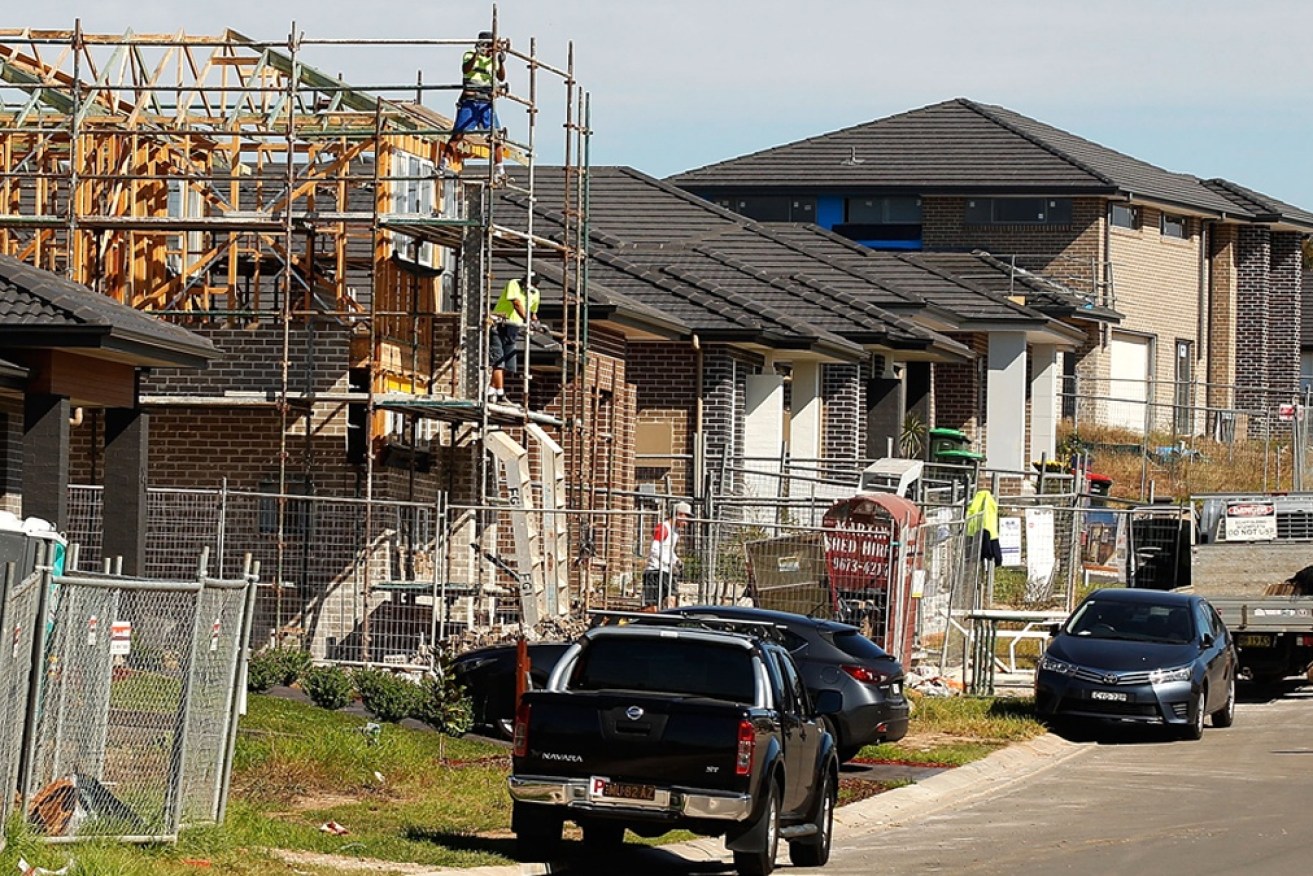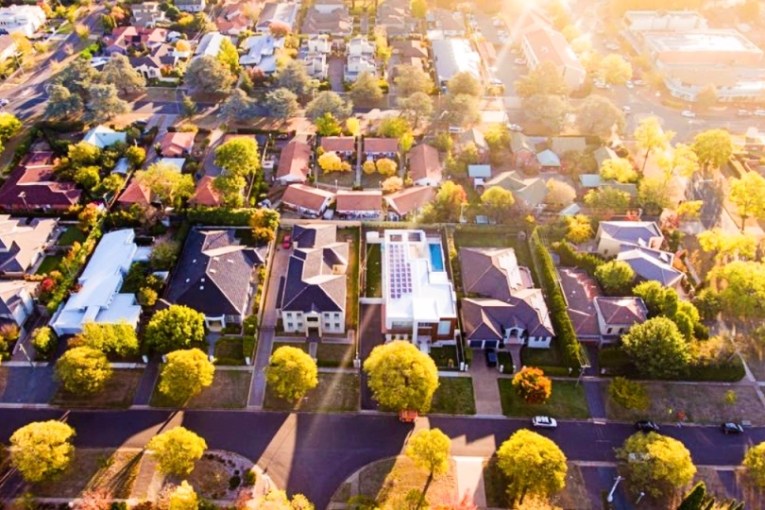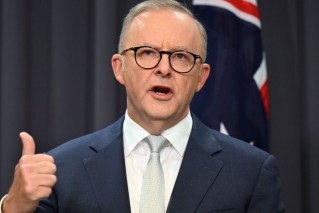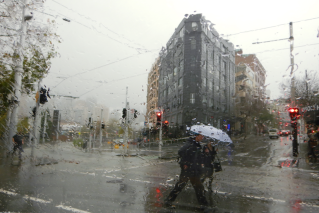Migration push means housing shortage remains, despite Labor’s budget fix


The National Housing Accord sets an “initial, aspirational” target to build one million new homes over five years from 2024. Photo: AAP
Australia’s housing market will remain “chronically undersupplied”, a leading economist warns, despite an Albanese government plan to build one million new homes by 2029.
Treasurer Jim Chalmers unveiled the government’s plan to accelerate the construction of houses nationwide in his first budget handed down on Tuesday night.
The National Housing Accord sets an “initial, aspirational” target to build one million new homes over five years from 2024.
To kickstart investment, the government has chipped in $350 million to support the construction of 10,000 new homes.
The states and territories have agreed to fund an additional 10,000 new dwellings – some of which could be built before 2024 – and to “expedite” their zoning, planning and land release processes.
The bulk of the money is supposed to come from the private sector, with Dr Chalmers hoping the agreement will entice superannuation funds and other institutional investors to invest in housing by covering the gap between market and subsidised rents.
“Most of this supply needs to come from the market, not the government. But, there’s a role for government and we intend to play a leading role by co-ordinating and kickstarting the investment we know needs to happen,” he said.
Australian Bureau of Statistics data shows Australia built 985,085 public and private units over the past five years to March – just short of the target set out in the accord.
Tweet from @PeteWargent
However, the government says the total number of houses built annually has dropped since 2018-19, compared to the peak of 205,000 a year in the six years before the pandemic.
Australia was on track to approve about 180,000 new dwellings this year, but not all of those homes would end up being built, housing economist Dr Andrew Wilson told The New Daily.
Australia’s housing market would remain “chronically undersupplied”, in part due to increased migration following the COVID-19 pandemic –even with the new accord in place, he said.
Australia’s population growth is forecast to peak at 1.4 per cent in 2024-25, when net overseas migration is assumed to have fully recovered to pre-pandemic trends.
“We’ve got resident migrants and student migrants coming in, so even with those aspirational targets we’re unlikely to meet new demand coming forward and that includes, of course, local household formation,” Dr Wilson said.
“Offshore demand and local demand will continue to move ahead of what we’re supplying at the moment and the headwinds for new home developments are significant going forward.”
‘Horrific’ construction costs
One such headwind is the skyrocketing cost of tradespeople and building materials, which has crippled the building industry over recent months and led to significant construction delays across the country.
“We’ve got home-building costs increasing at over 15 per cent annualised at the moment,” Dr Wilson said.
“That’s a little bit less than the record of April, which was around 18 per cent, but still, these are horrific figures, particularly for builders that work on those fixed-price contracts.
“We’re really not seeing any significant relief in high and rising home building costs and that, of course, is a real constraint to new development going forward.
“I don’t think these initiatives are really going to significantly change that outlook.”
But Master Builders Australia CEO Denita Wawn told TND she was hopeful there would be a decline in some supply chain and inflationary problems by 2024, when the housing accord comes into effect.
The government, investors and the residential construction sector had committed to address the surging labour and material costs under the agreement, she said.
“The delay until 2024 will allow time to address some of these challenges including regulatory pressures and skilled migration,” she said.
“Master Builders forecasts we will fall significantly short of our 200,000 per year targets for new dwellings until 2026 with the worst anticipated in 2024 – around 175,000 homes – with a steady increase being seen from 2025, so this accord is timely to meet expected demand.”
‘Serious start’
According to policy papers, the National Housing Accord would increase “quality, affordable housing supply over the medium term” by encouraging superannuation funds and other institutional investors to invest in building new rental housing that is offered at below market rent.
The policy is viewed as a win-win for the superannuation industry, with Industry Super Australia chief executive Bernie Dean saying it would secure “good risk-adjusted returns”.
However, housing advocates have mixed views about whether the accord would have a tangible impact on those in need of affordable housing.
Better Renting executive director Joel Dignam accused the government of trying to shift responsibility for the provision of affordable housing to the private sector, which he said had “shown no appetite for doing something meaningful”.
“We need a shift in our values, our rhetoric and our policy that makes the housing system actually about people and making sure they have good homes,” he said.
“Instead, we see the government continue to shirk its responsibility, cross its fingers and hope that the private sector will do more.”
Organisations such as the Australian Council of Social Service and Community Housing Industry Association welcomed the agreement, describing it as a “serious start” to tackling the country’s housing crisis.
“The Commonwealth is not only investing a substantial sum, but it is also spurring the states and institutional investors to get involved while helping co-ordinate the effort,” Community Housing Industry Association chief executive Wendy Hayhurst said.
“This gives community housing providers confidence and certainty, and will enable the expansion of the sector to meet the housing needs of lower-income Australians.”
Labor also promised at the election to spend $10 billion on its Housing Australia Future Fund to generate returns to fund 30,000 affordable and social homes over five years.
Another government housing program is the Help to Buy scheme – costing $324.6 million over four years – which gives eligible home buyers an equity contribution to buy a home with a smaller deposit and mortgage.








